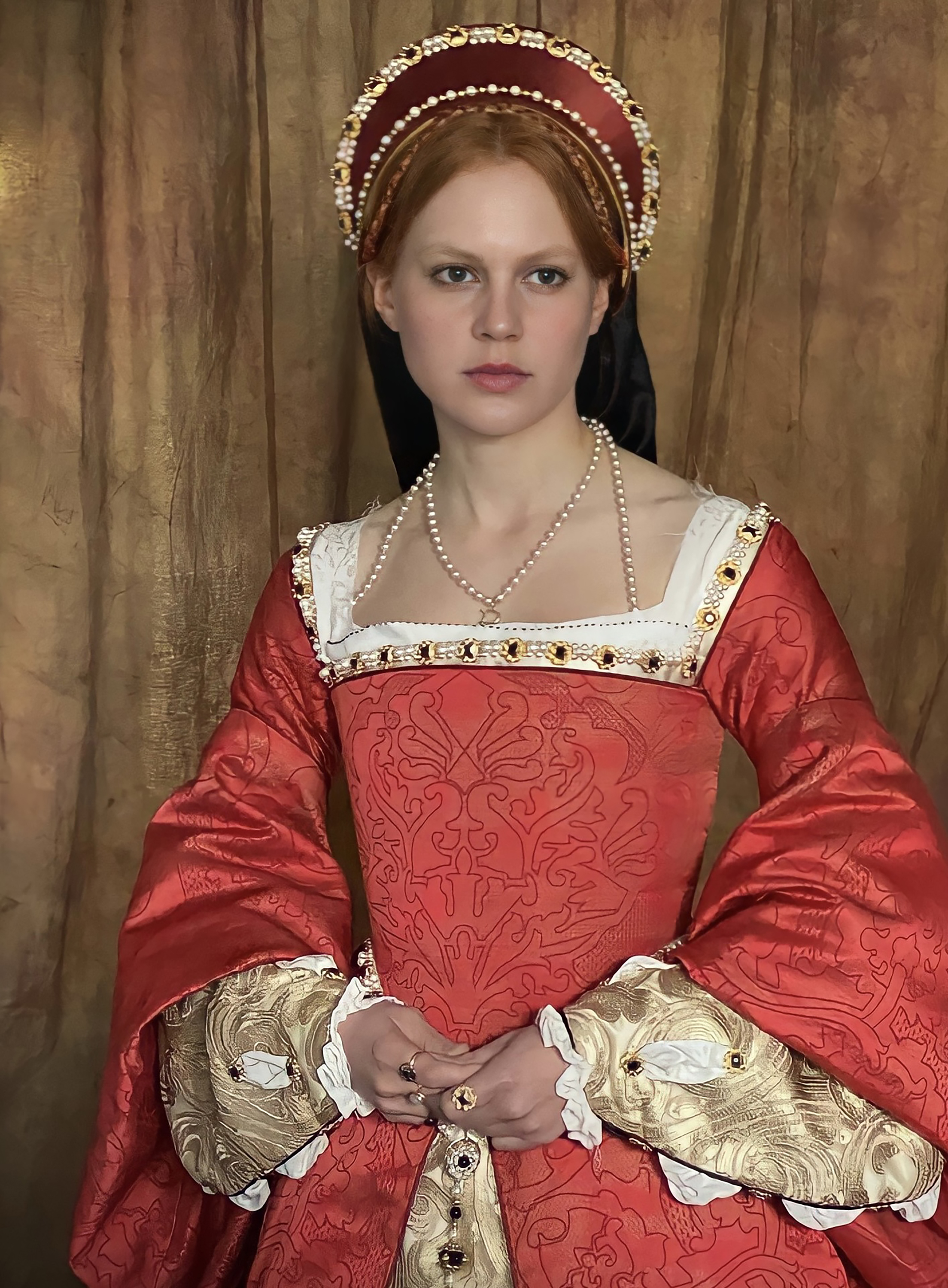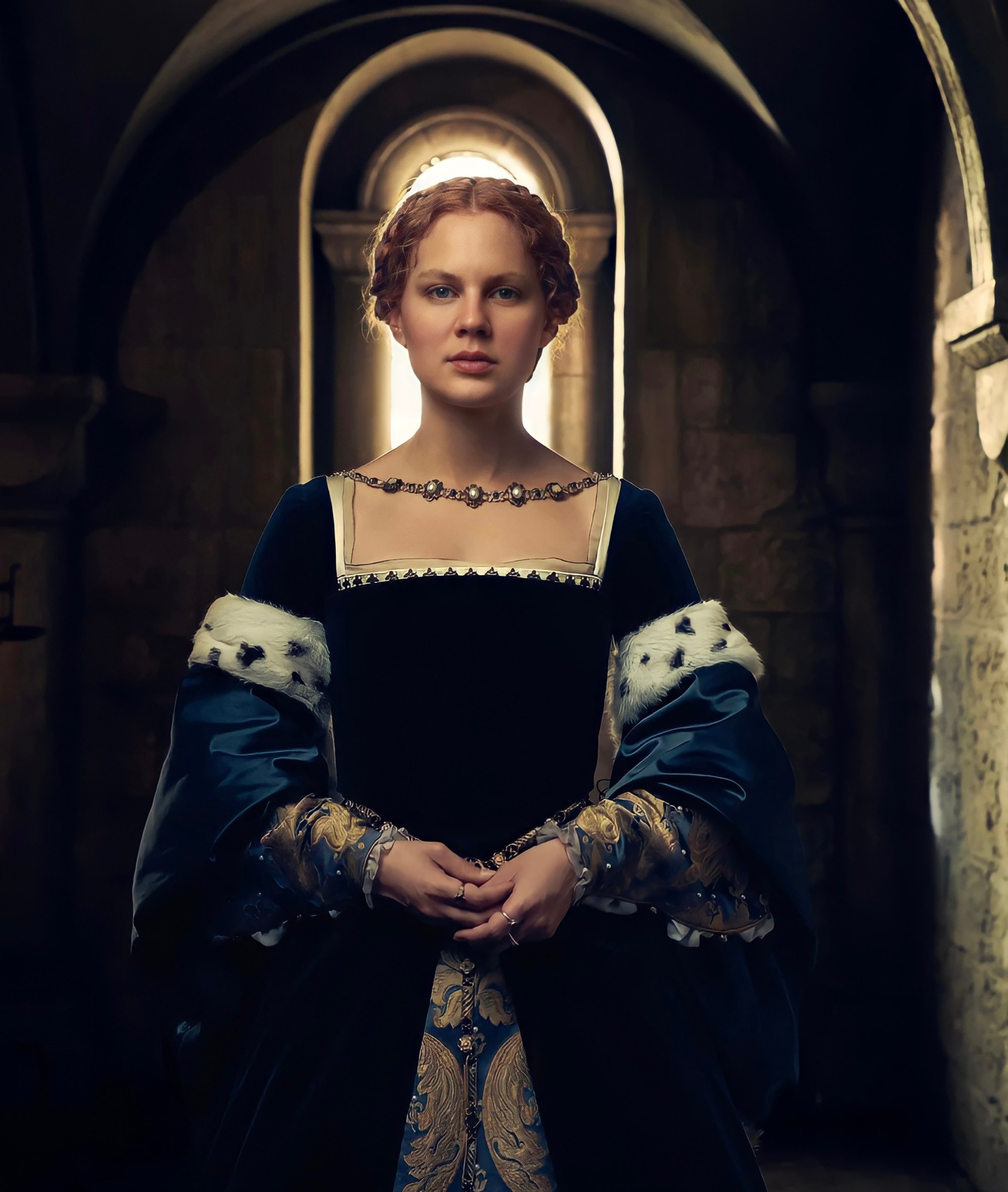
- Fashion
Fashion as a Metaphor: Alicia von Rittberg in “Becoming Elizabeth”
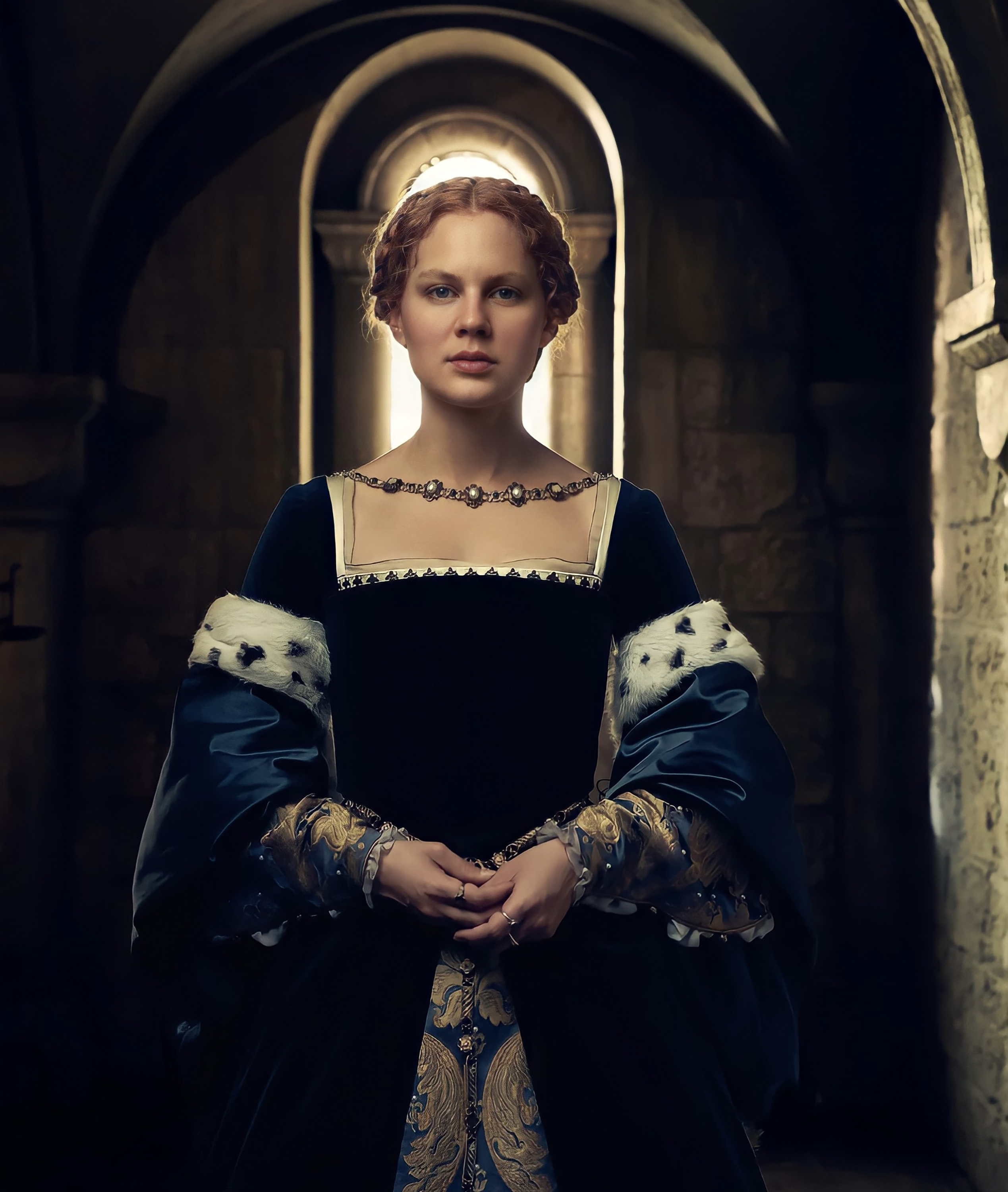
Starz’s Becoming Elizabeth is a historical fiction drama series which follows the younger years of Queen Elizabeth I, daughter of King Henry VIII and Anne Boleyn. Her Majesty reigned England and Ireland from 1558 until she died in 1603.
The storyline centers on the relationship between the three heirs of King Henry VIII and is set right after his death, when Edward VI (Oliver Zetterström) is crowned at the age of 9 while his half-sisters Mary (Golden Globe nominee Romola Garai) and Elizabeth Tudor (Alicia von Rittberg) get involved in the politics of the English court on their journey to secure the crown.
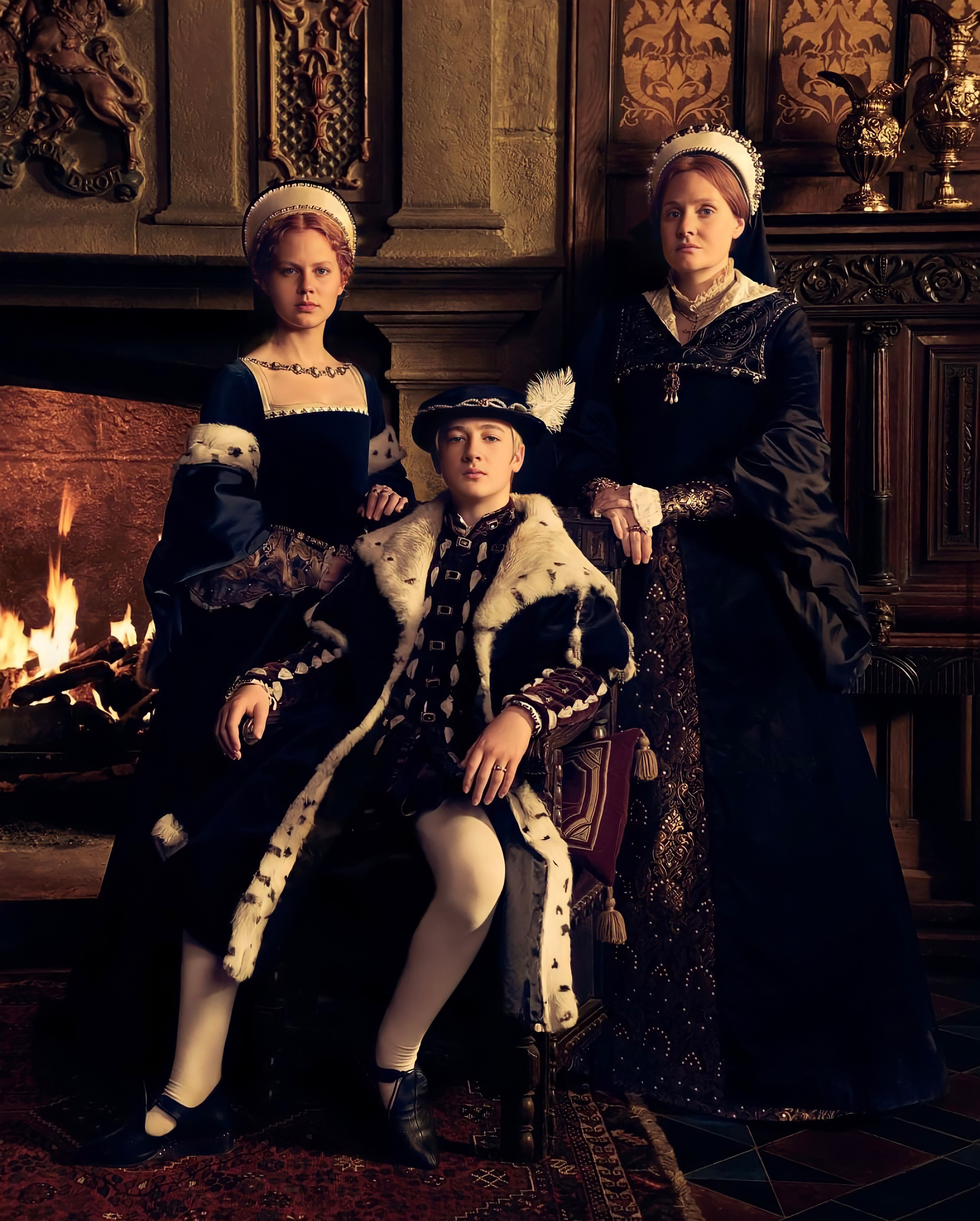
Apart from showing Elizabeth’s family drama and a romantic relationship with Thomas Seymour (Tom Cullen) that impacted her entire life – as well as her transformation from an orphaned teenager into an independent and strong political figure while she navigates the English court – the series presents a unique opportunity to dive into the fashion of that period in history, here recreated by costume designer Bart Cariss.
Cariss started his career at Angels The Costumier, where he spent six years mastering the craft of a costumier and gaining extensive knowledge of period costumes. In Becoming Elizabeth, his objective is not to merely recraft the Tudor era but to add a subtle modern touch as well.
Speaking about women’s fashion of that time, its key components are the embroidered chemise, kirtle, and gown. Delicate embroidery, called Spanish blackwork, makes a subtle but striking appearance in the chemise.
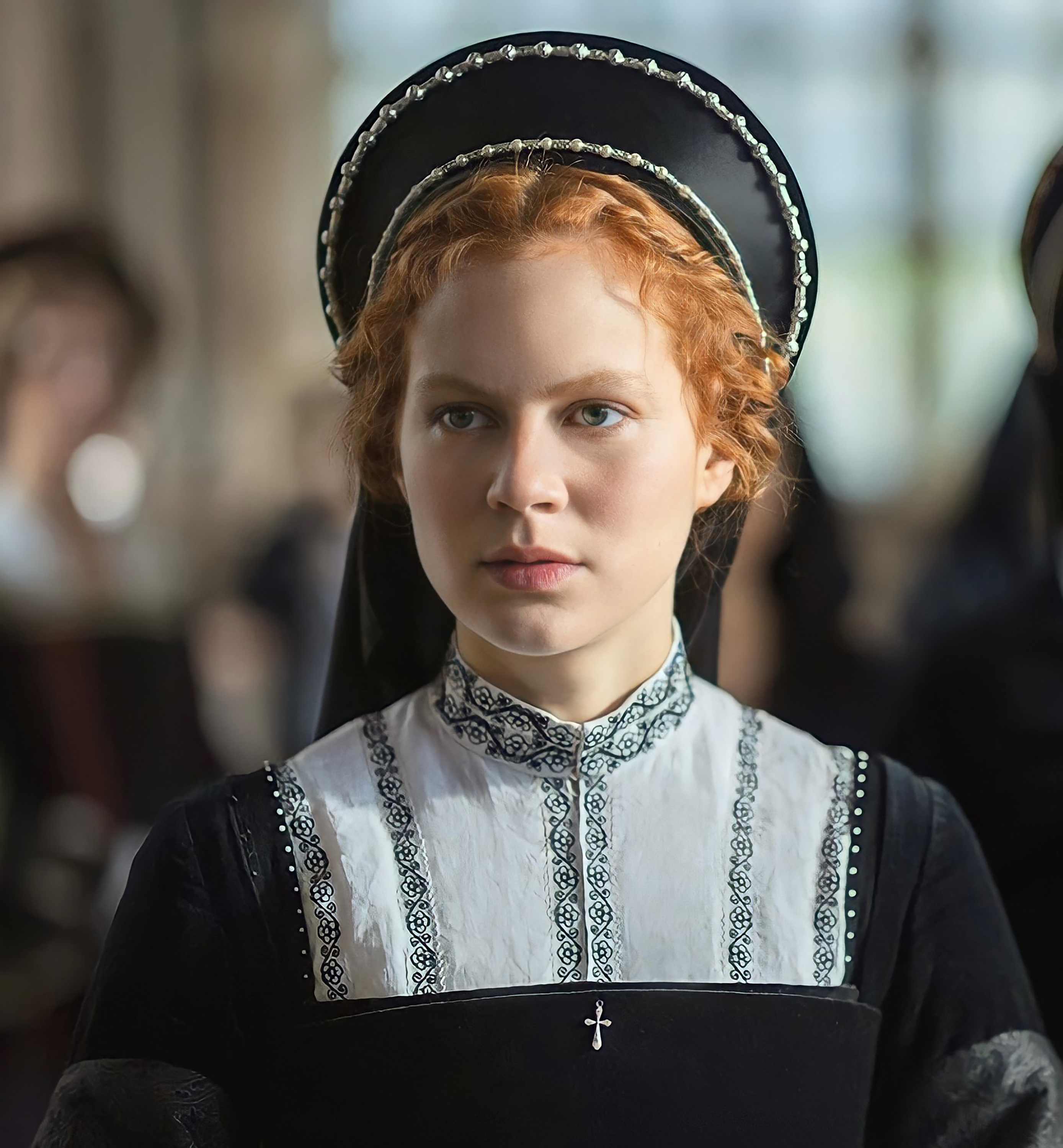
A dress has two parts: a stiffened bodice and a skirt with a rigid shape that is achieved by the farthingale underneath. Princess Mary and Princess Elizabeth wear the signature silhouette of the time: the cone of the skirt echoed in the giant funnel-shaped sleeves, accentuating the narrow waist.
The girdle, or a decorative belt highlighting the waist, is the must-have accessory.

In the mid-16th century, the funnel-shaped sleeves of the gowns are accentuated by voluminous undersleeves made of the same rich fabric as the forepart (the visible part of the kirtle in the inverted-V shape opening of the gown). They are then decorated with wide seams closed by broaches, clasps, or aiguillettes.
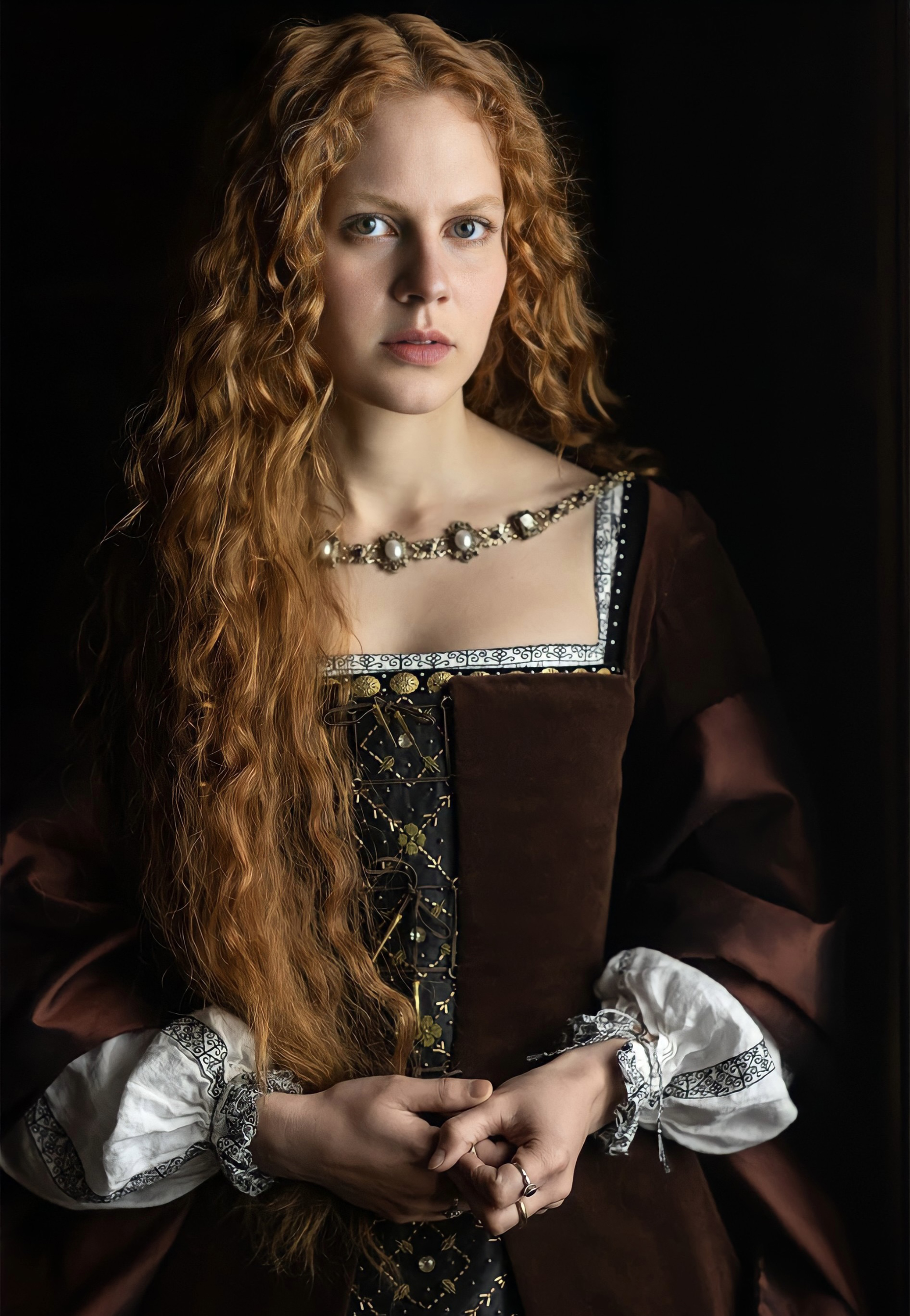
Another must-have accessory of the Tudor period is the French hood. It’s often seen dominating the headdress style. It’s worn over an intricate coif and has a black veil attached to the back, fully covering the hair. Once introduced by Anne Boleyn, it fast became the latest court fashion, its edges lined by jewels matching necklaces and rings.
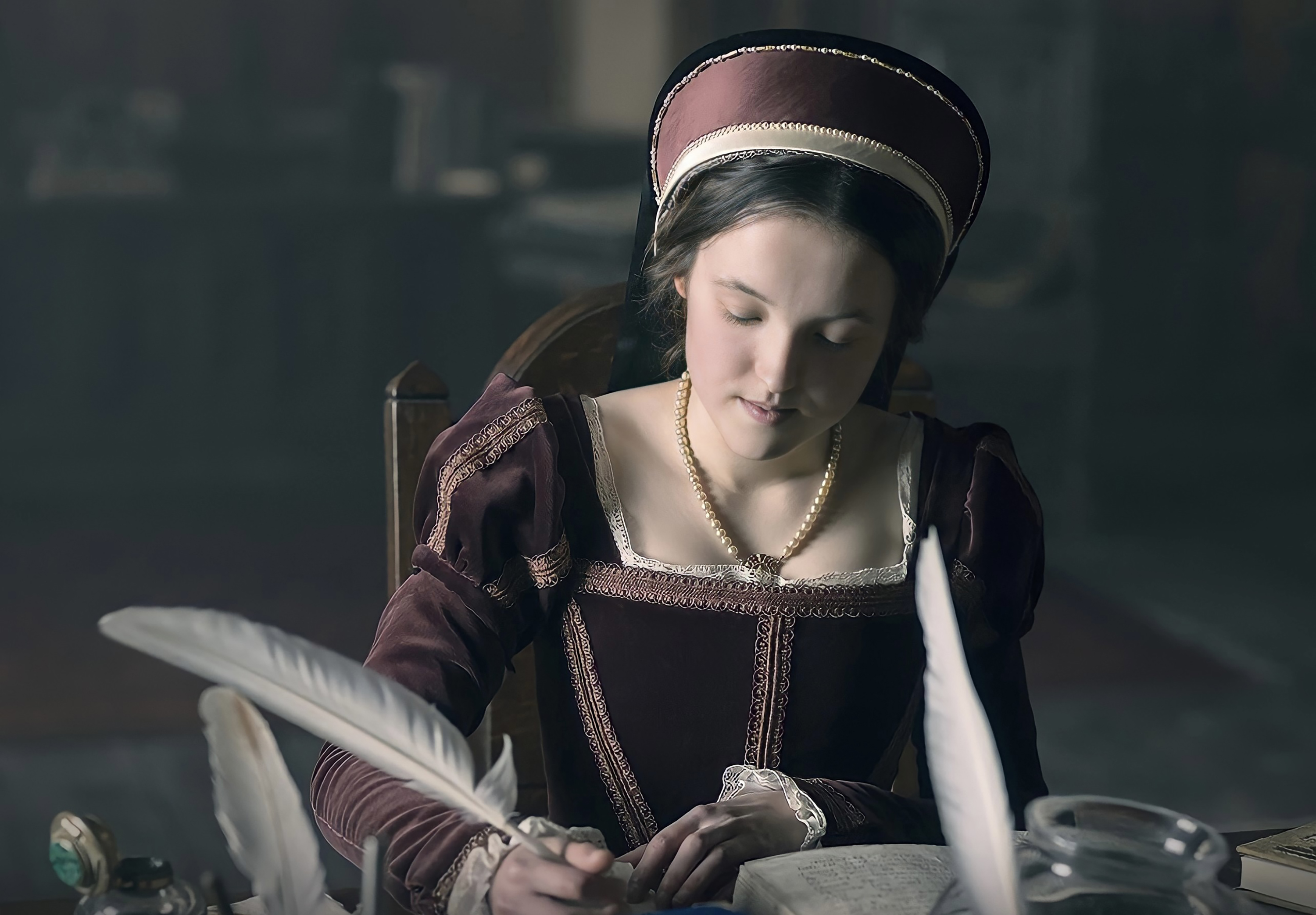
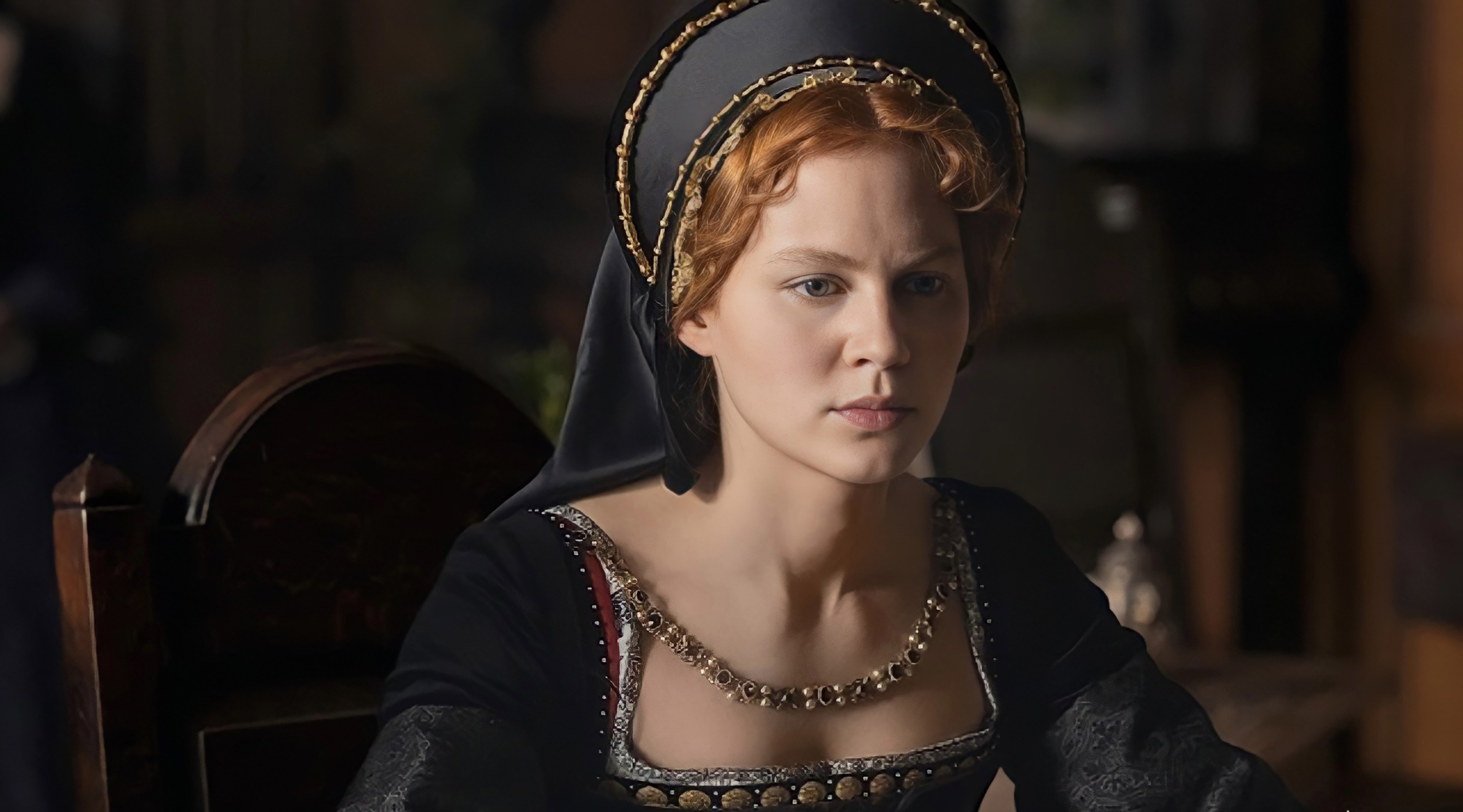
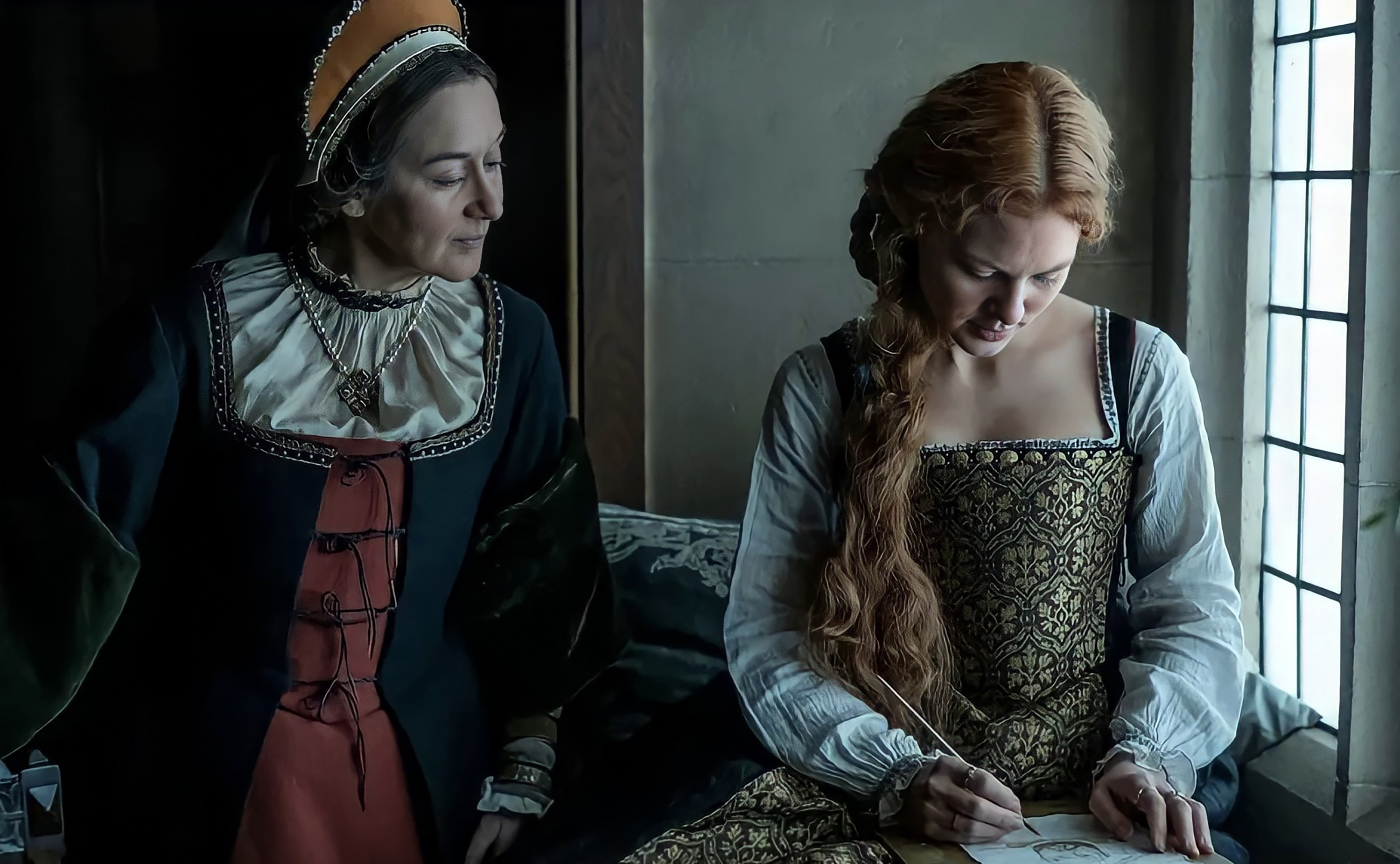
Katherine Parr (Jessica Reine), the last of the six wives of King Henry VIII, is considered the main fashion icon of the time. Her apparel, exhibited in classical paintings, is the peak of luxury. Styles include all the essential fashion elements: signature silhouettes, luxurious fabrics, lynx fur lining the sleeves of her gowns, chemises with redwork embroidery, and exuberant jewelry. Cariss recreates her choices by adding chic elements to emphasize her character arc: apart from being the most-married queen in the history of England and Ireland, Parr was the first woman to publish an original work under her name in England. Cariss dresses Parr using her favorite palette made of crimson, dark blue, and violet. Compared to her real-life portraits, the costume designer uses significantly less ornamentation and jewelry.

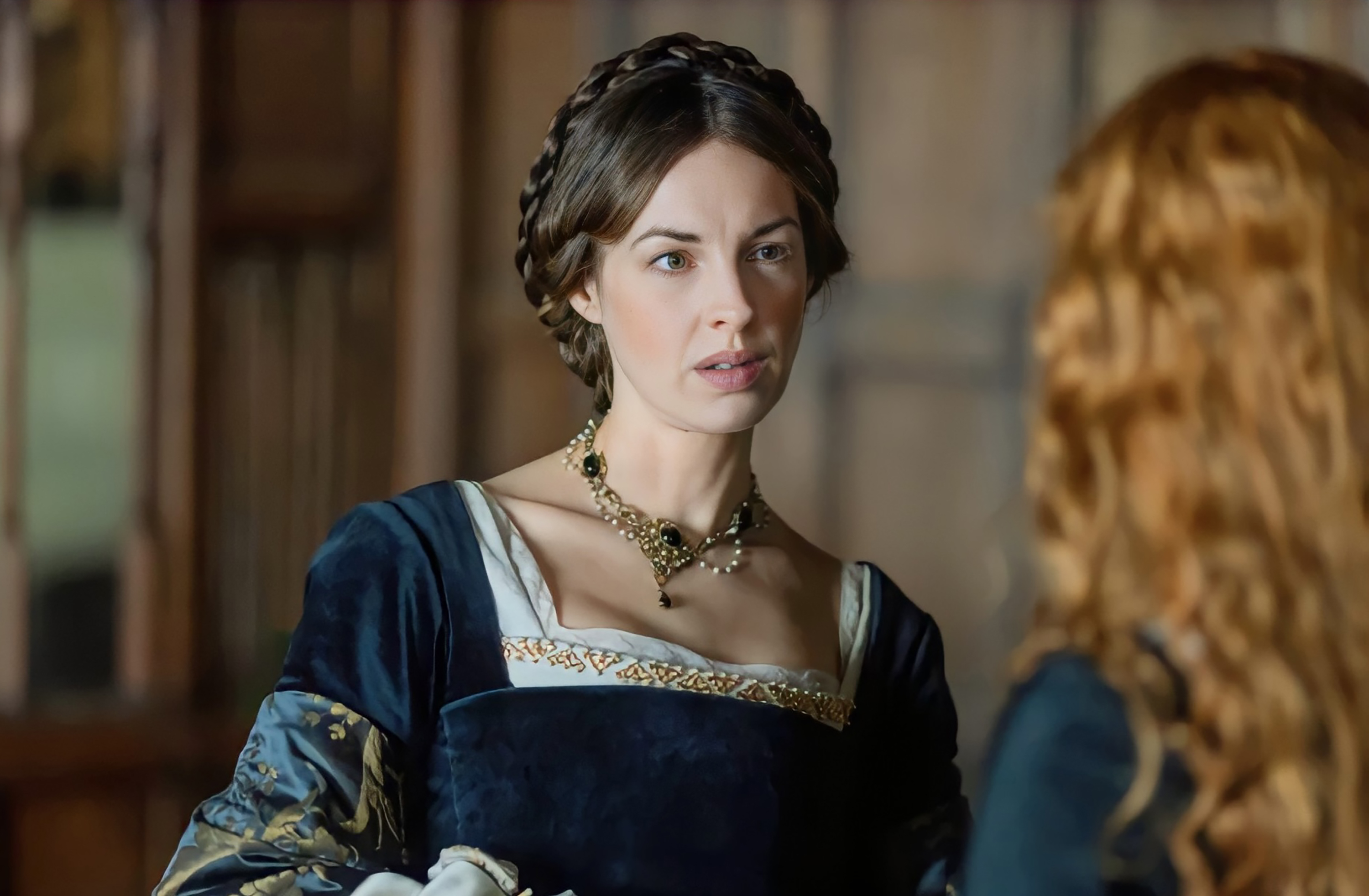
Costumes are a major narrative tool used in Becoming Elizabeth. They convey a transformation that surges from within and shows a humble teenage girl who blossoms into a confident young princess. When we see Elizabeth in the first episodes, she is dressed in darker colors and plainer fabrics to highlight her youth and naivety, and to serve as a contrast to the sophisticated apparel of her former stepmother and wife to Sir Thomas Seymour. Such a somber appearance also sets her apart from the conservative style of her elder sister, Princess Mary.
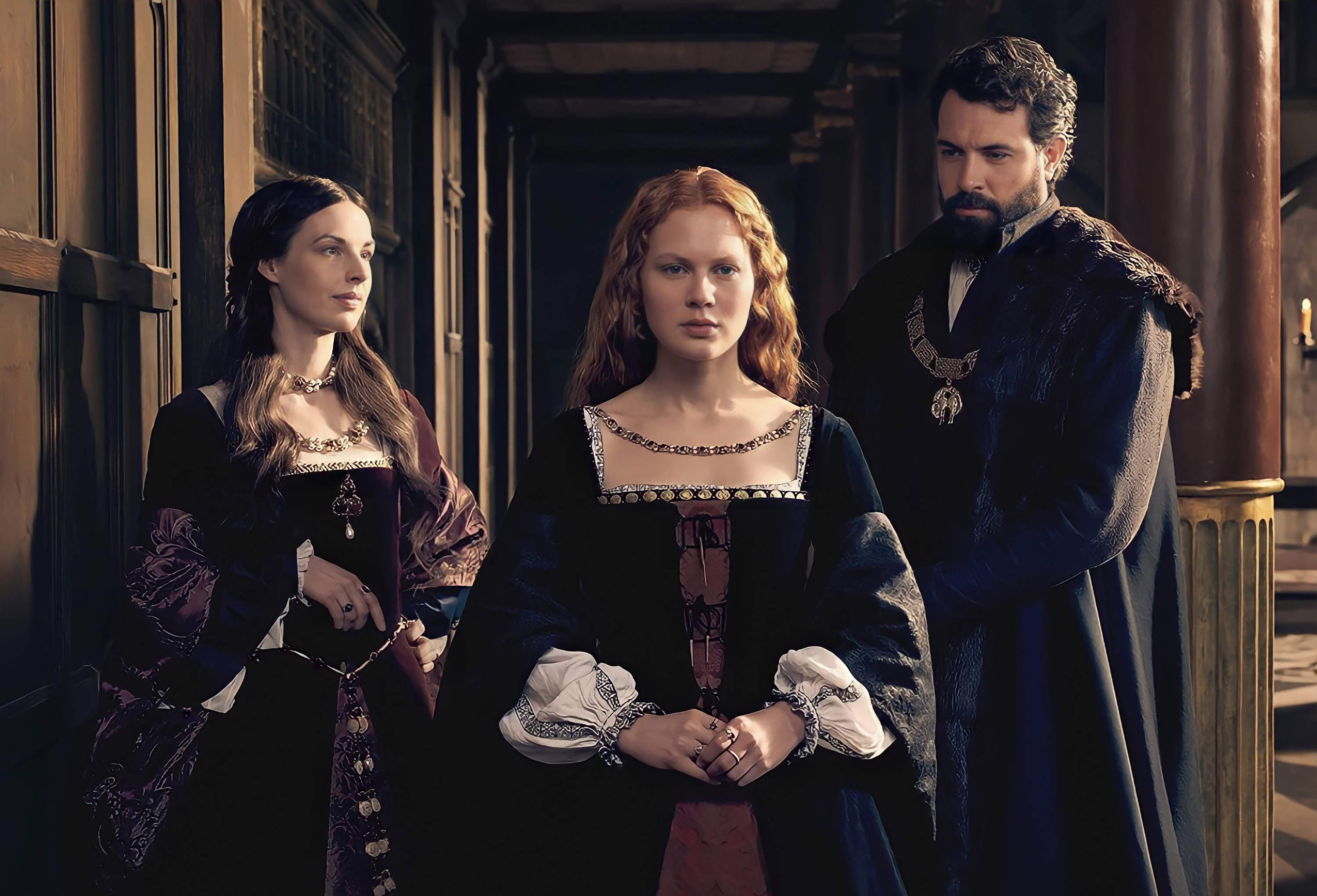
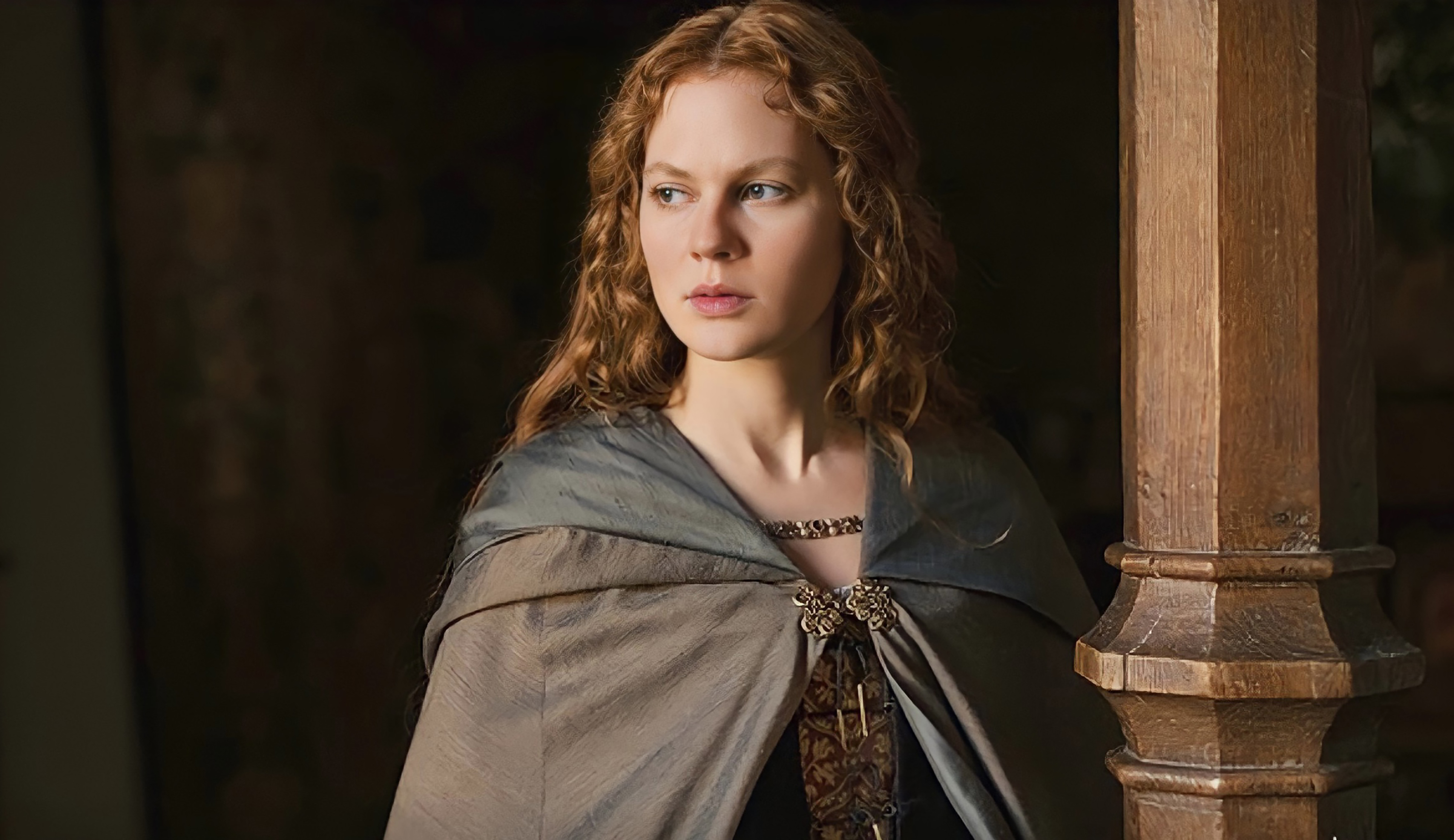
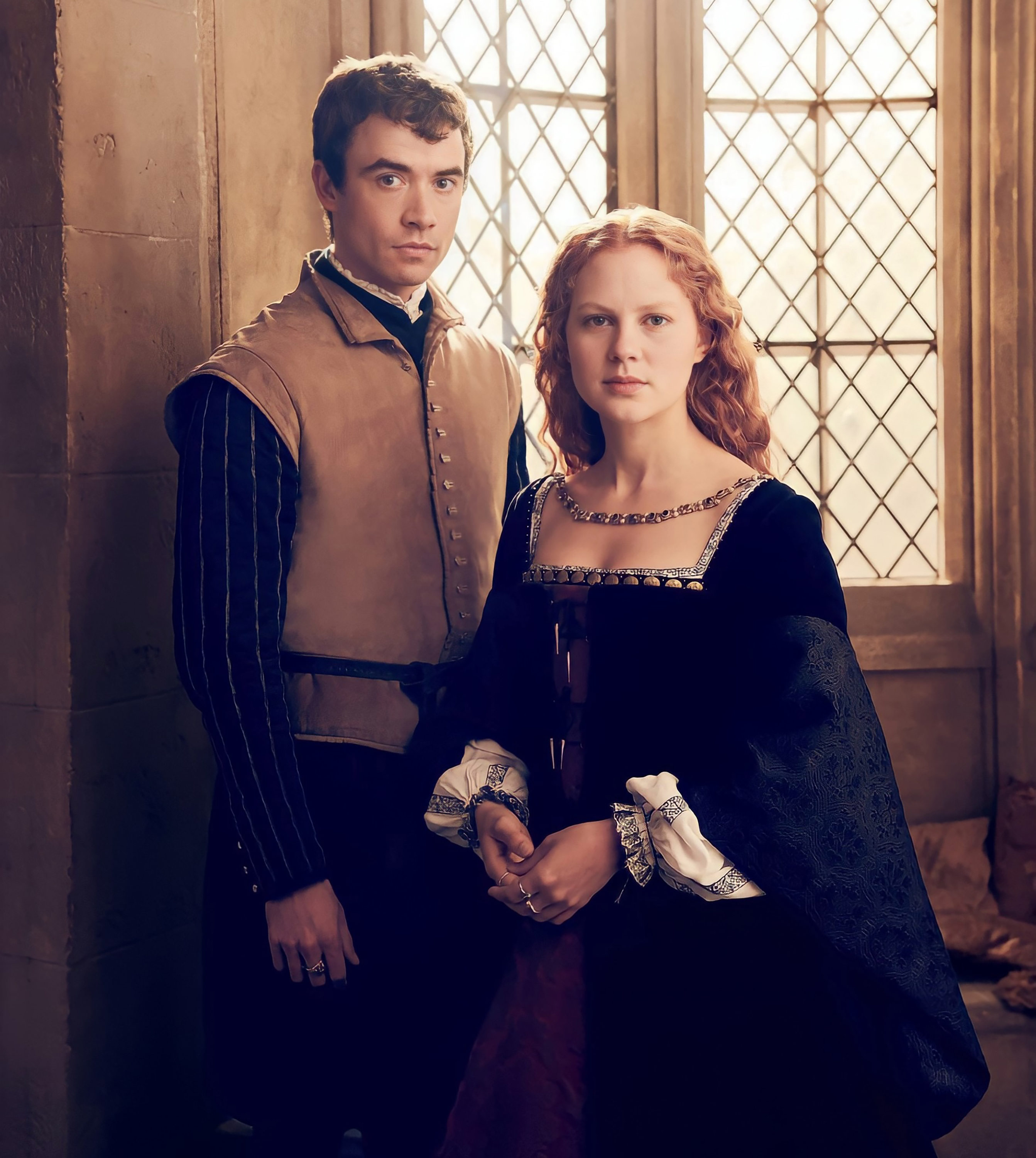
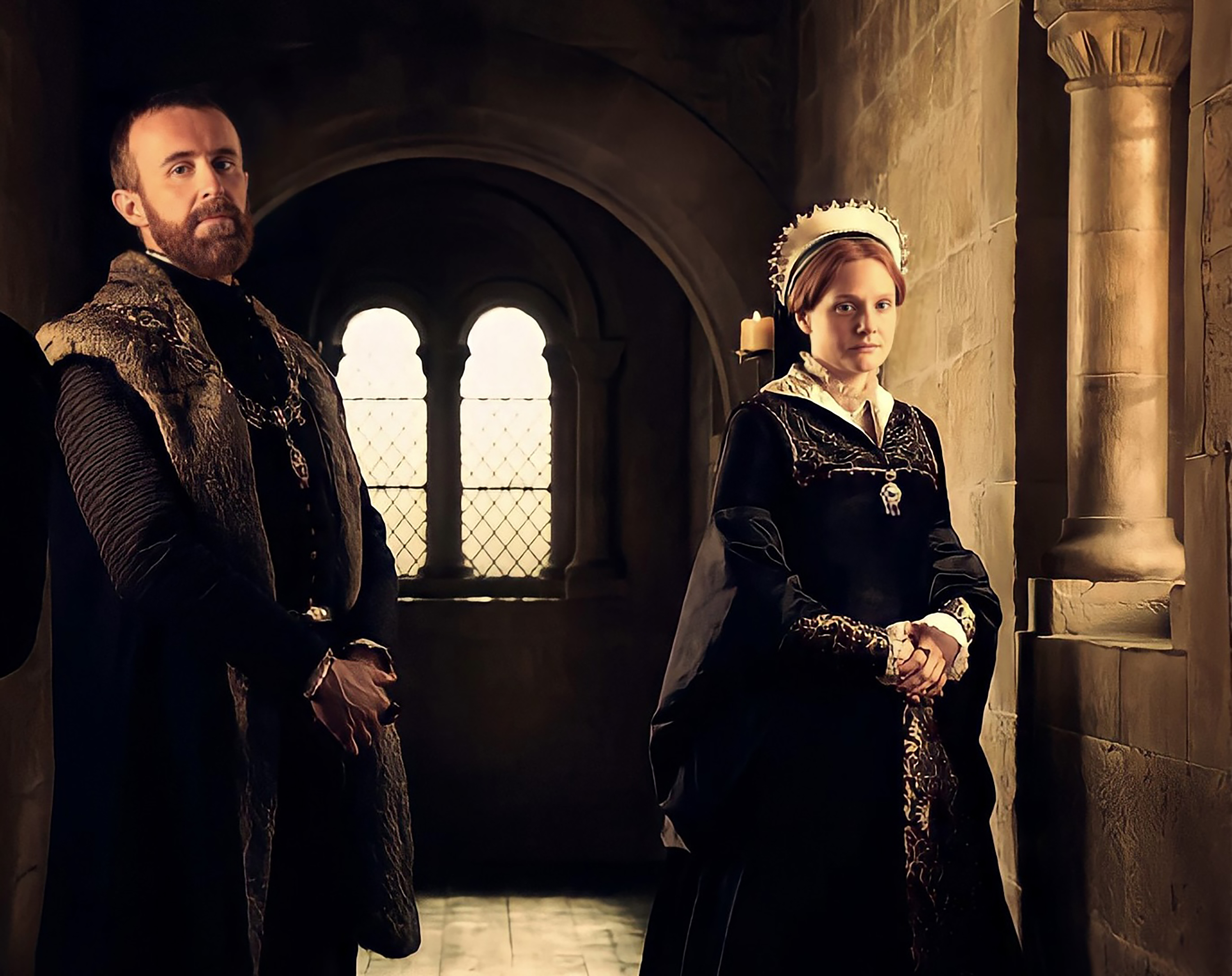
The older Elizabeth gets, the deeper she dives into the behind-the-scenes games of the English nobility, and the more royal her style becomes. When she first visits the court, accompanied by Katherine Parr, she wears a dark olive gown embroidered with a gold braid highlighting her hair color. Her French hood is significantly less ornamented than the ones chosen by Princess Mary or Katherine Parr. More significant yet, Elizabeth wears no fur, while Parr’s outfit is accessorized with a luxurious palatine.
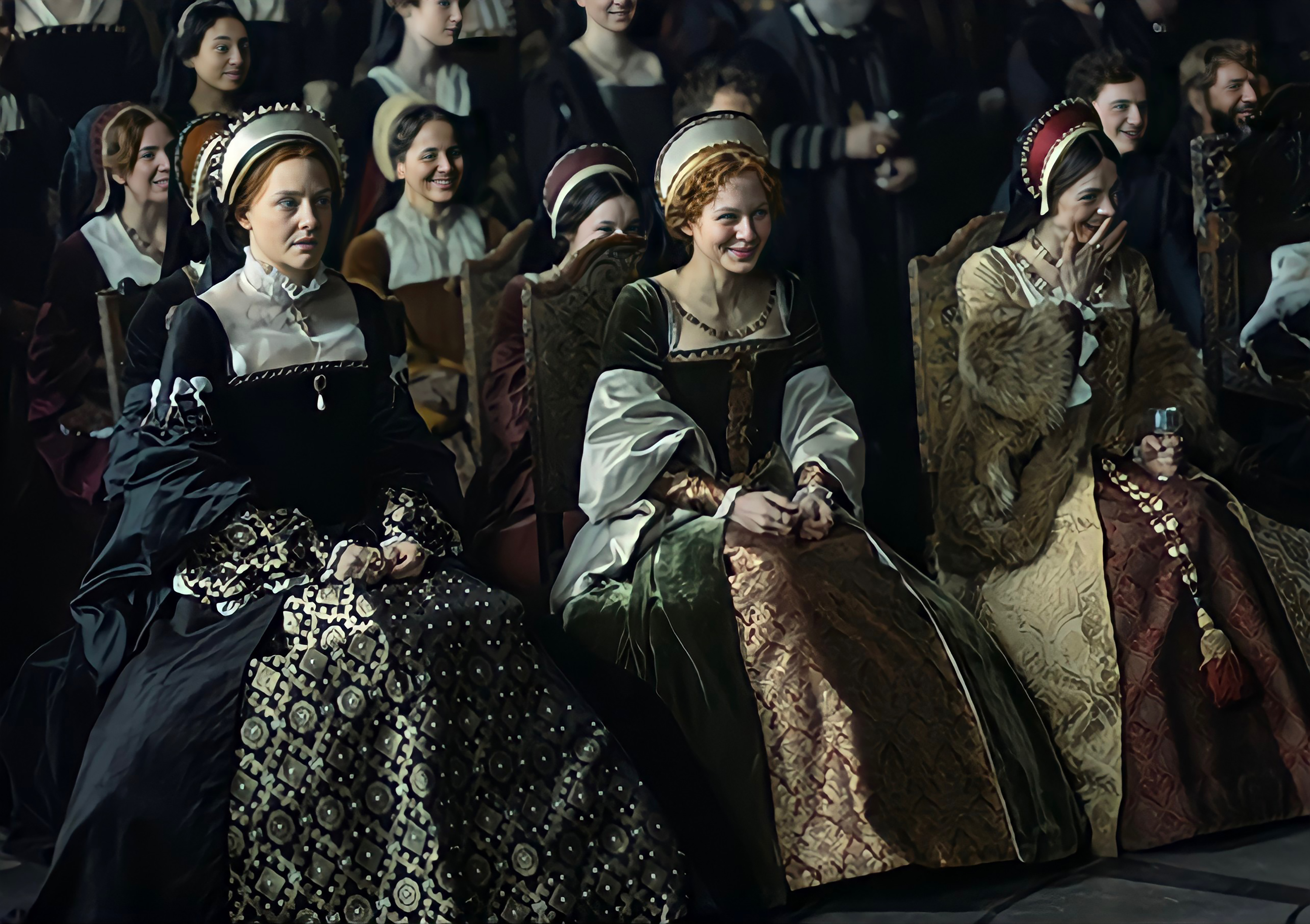
One of Becoming Elizabeth’s signature looks is an ultramarine blue gown with gold embroidery lined with zibeline and accessorized with sapphire-pearl aiguillette. With this sumptuous touch, Elizabeth’s royal status is emphasized. At the same time, the viewer accesses an artistic metaphor: the dark blue color can be interpreted as a symbol of fidelity towards her younger brother, King Edward VI; or a reference to the sadness felt by being in a relationship with Thomas Seymour.
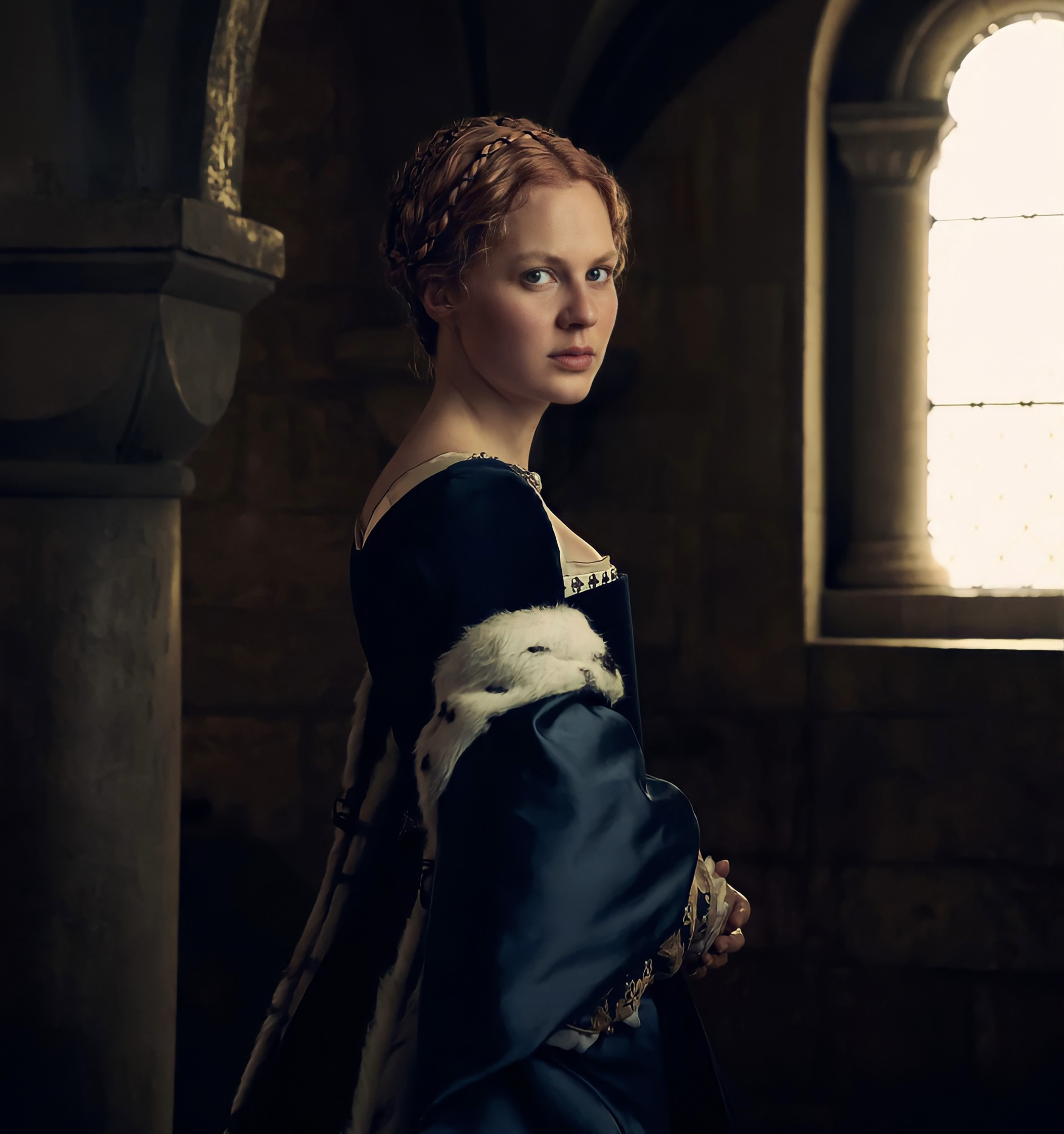
Elizabeth’s fine scarlet gown with jewel trim and gold petticoat, which she wears in Episode 7 for the first meeting with her potential husband, is one of her most iconic looks. This dress was inspired by the real Elizabeth’s portrait painted in 1546 by William Scrots for her then-reigning father. The ensemble was recreated by Cariss using a contemporary approach that makes the Tudor fashion rules look modern by diminishing abundant ornamentation and altering the waistline to a more realistic silhouette.
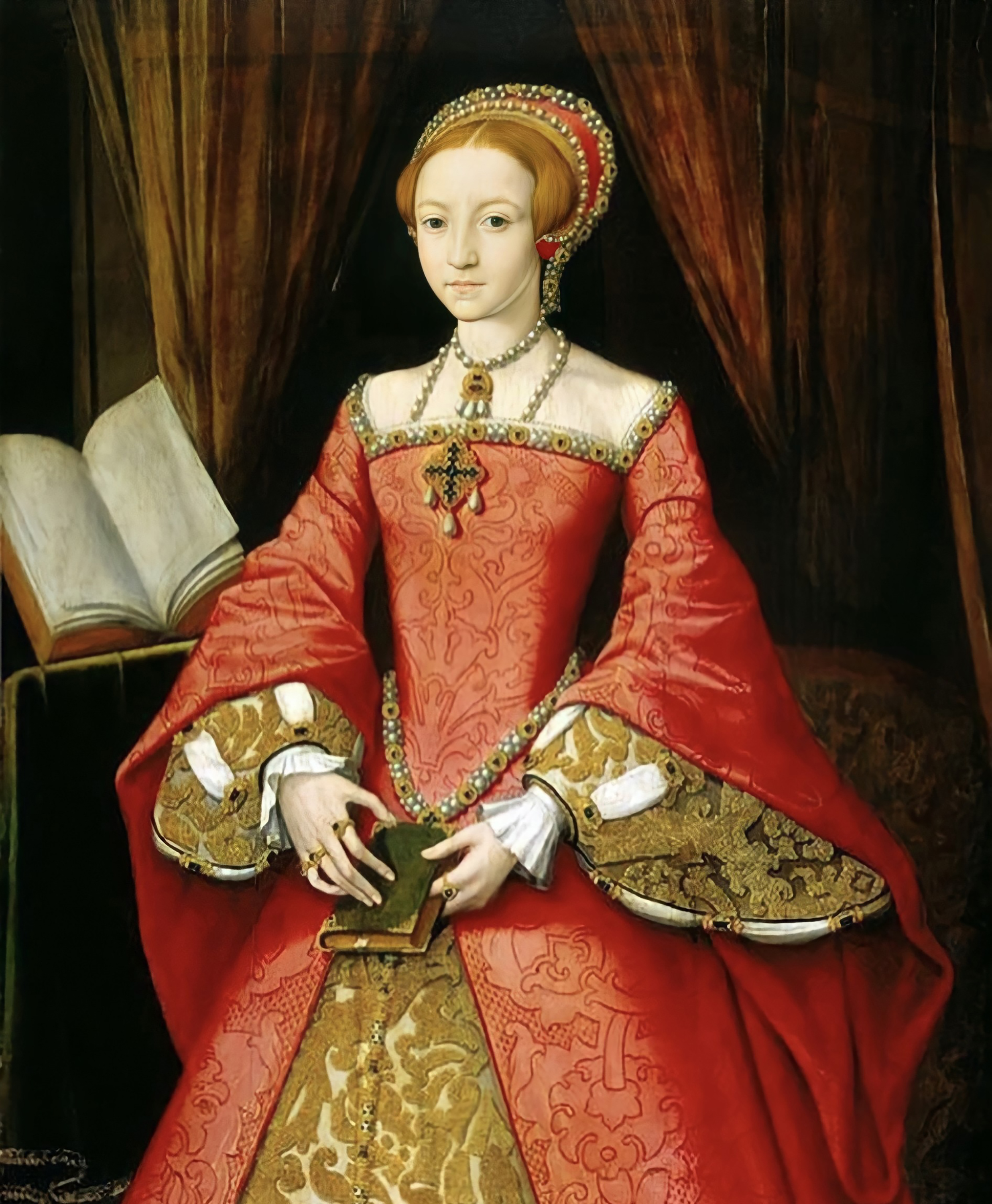
This dress, or “The Dress”, is another brilliant metaphor made possible by Cariss and the showrunners. We get to appreciate it in the episode set in the wake of Thomas Seymour’s execution before Robert Dudley (Jamie Blackley) reveals his true feelings to Princess Elizabeth – he asks her to run away with him, instead of marrying Prince Frederich of Denmark. We see Elizabeth making the choice of a lifetime and becoming the person we know as the legendary Queen Elizabeth I.
